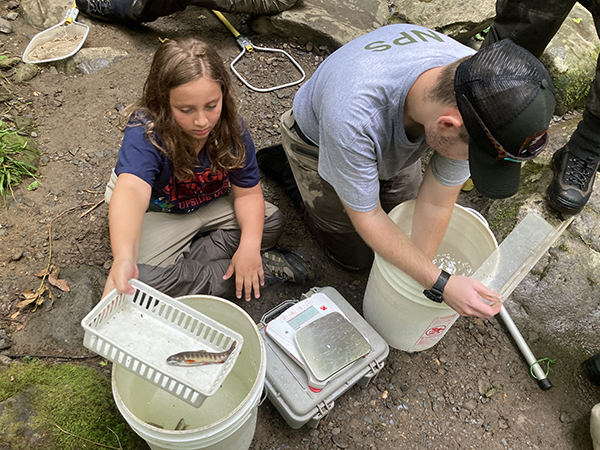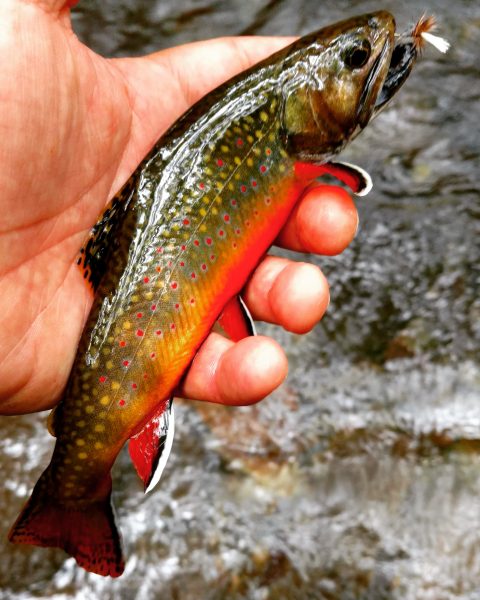We’ve been on the water volunteering with the national park fisheries biologists this summer. As always we try to pass on anything we’ve learned. One thing that is quite clear from looking at the fish populations is that winter floods of the past few years have had a noticeable impact.

Our son Boone assisting national park fisheries biologists. All trout are counted, measured and weighed to track the population from one year to the next.
We participated in a population count on Lynn Camp Prong over two miles upstream of the Middle Prong trailhead near Tremont. While there was a good population of brook trout, one thing was very noticeable. The bulk of the fish were either relatively large or very small. The very small fish hatched from eggs late last fall or early last winter and are growing as expected. The larger fish were all 7″- 9″+ and considered big for that stream. Only a handful of fish fell between the fingerlings and 7″+. This illustrates how three consecutive years of winter floods washed out brook trout eggs or fry before they were old enough to withstand high flows.
The good news right now is that there are some brook trout in the Smokies that are larger than what we expect to see most years. Unfortunately, they won’t live forever though. As they die from old age over the next few years we’ll start to see a surplus of smaller fish and fewer of the older fish around.
It can also be assumed that brown trout populations are in a similar situation as they are fall spawning fish as well. There are likely some really nice ones in Little River, Deep Creek, and the Oconaluftee River but not many smaller ones right now. Over the next two years we’ll likely see a proliferation of smaller fish start to appear as long as we don’t have any more exceptional winter floods.
We’ve seen this happen in the past with rainbow trout since their spawning period can overlap with our spring floods. A few years ago we had an unusual number of large rainbows in our streams but that has evened out with several age classes of fish well represented.
